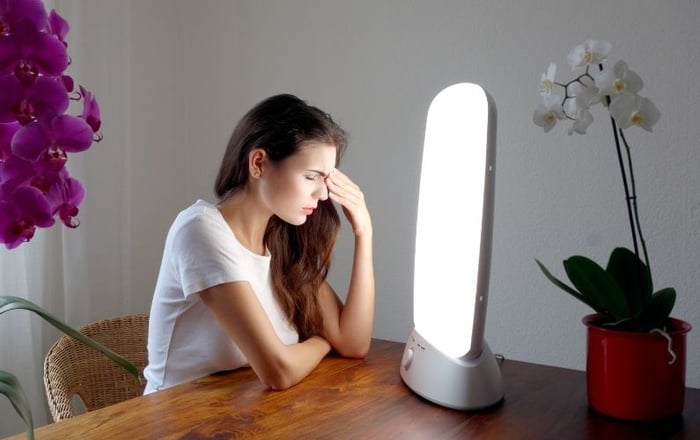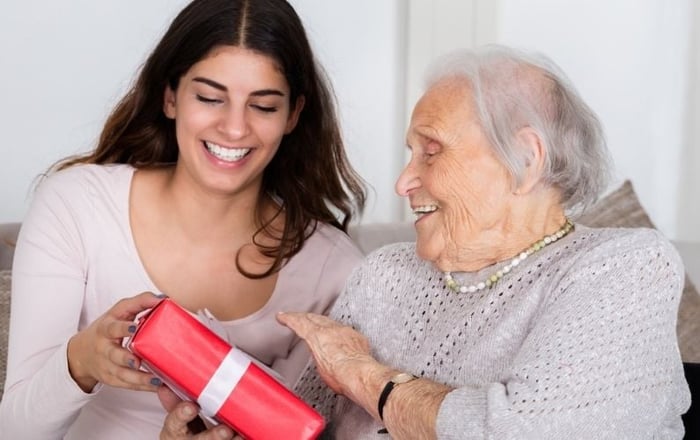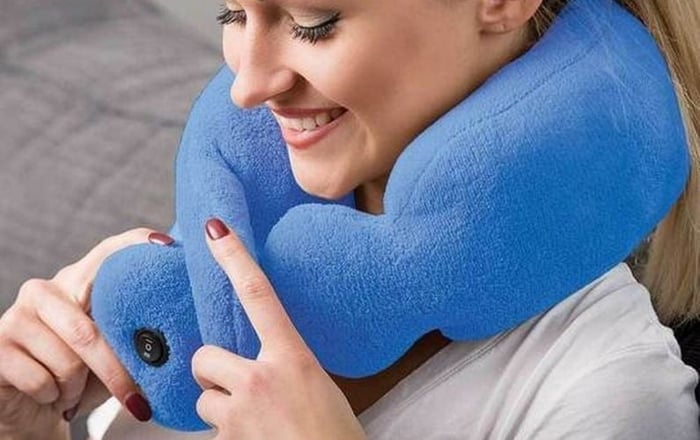Are the dark winter months bringing you down? Learn how you can start using light therapy to brighten your mood and combat seasonal depression.
Mornings are a fresh start. They should be filled with energy, light, and upbeat vibes. However, this is not always the case.
Sometimes, our mornings are dark, dreary, and pretty depressing. (Especially during the fall and winter months.) This can negatively affect the whole day. It can impact our work, relationships, energy levels, and even our health. So what can be done about this?
Well, medication is always an option... But, a better (and more natural solution) is light therapy.
If you are unsure what light therapy is and are curious about how it works, then this post is for you! We will be shedding some light (pun intended) on the exciting health benefits of light therapy and discussing how to know if this treatment option is right for you.
Let's begin.
What is Light Therapy?
Light therapy is a natural treatment option that utilizes artificial bright light to mimic outdoor light. It is primarily used as a therapeutic solution for people who suffer from the seasonal affective disorder (SAD), but it is also used by people with irregular sleep patterns, shift workers, anyone experiencing jet lag, and also people with various types of depression.
Artificial light therapy is typically quite effective in these cases, as it offers a sense of regularity and consistency when it comes to light exposure (more on this later). Light therapy is the preferred treatment for many since it can be done at home or the office, takes no longer than 30 minutes, and has minimal side effects.
How Does Light Therapy Work?
In the same way that society uses the time to function properly, so do our bodies. However, rather than constantly having to check the clock, our bodies rely on our internal clock... Don't worry, you don't have a ticking clock inside of you.
But, your body does rely on something called the circadian clock. This internal clock uses the predictable patterns of natural light to function properly. Essentially, it helps signal to our brain when it's time to wake up and when it's time to rest.
Now, this is all great. But, what happens when the sun goes into hiding for the majority of the fall and winter months? You guessed it. Our circadian clock gets thrown totally out of whack. This can seriously affect our mood, energy levels, and sleep patterns. And although this is mainly due to the lack of natural sunlight exposure, sometimes, these symptoms can be caused by working mainly indoors, working late-night shifts, or even just a bad case of jet lag.
Thankfully, light therapy can help with this. By using a light therapy lamp every morning, especially during the fall and winter, these symptoms can be alleviated. This is because the artificial light acts as outdoor natural light, which in turn, helps regulate our internal clock.
Light Therapy Benefits
What benefits can you expect from light therapy? Well, by normalizing your light exposure, your circadian clock will get back into its' rhythm. This means you will feel refreshed and energized in the morning and ready for a nice long sleep in the night. In fact, this study found that people experienced increased alertness, attention, vigilance, and a more positive mood after brief exposure to artificial light!
Additionally, light therapy may play an important role in treating seasonal affective disorder and various forms of depression. (Especially when combined with other healthy lifestyle changes, such as regular exercise, clean eating, and proper nutrition).
How Long Does it Take for Light Therapy to Work?
In most cases, you will begin to notice improvements within a few days to a couple of weeks. The most important thing is to be consistent with your treatment and find a way to incorporate a light therapy session into your daily morning routine.
To help you get started, we have put together a few quick light therapy tips for you.
How to Use Light Therapy at Home
Here are a few best practices when it comes to using light therapy at home:
1. Begin treatment during fall and end treatment during early spring (when using to treat SAD).
2. Find a good quality light therapy lamp that is 10,000 lux and that filters out 99% of UV rays.
3. Schedule your light therapy sessions for the mornings (preferably right when you wake up) and use for 20-30 minutes. Light therapy can be done alongside other tasks, such as reading, eating, or getting ready for work.
4. Place lamp 16 to 24 inches away from face and position off to the side (do not place lamp directly in front of you and do not stare directly into the light).
5. Try to be consistent with your sessions to get the best possible results.
Note: Make sure to consult your doctor or mental health provider before beginning light therapy treatment. This is especially important if you have sensitive skin or eyes.
Best Light Therapy Lamps
Here are a few light therapy lamps to check out:
- Carex SunLite Therapy Light
- Carex Day-Light Sky Therapy Lamp
- TheraLite® Aura Mood and Energy Enhancing Light Therapy Lamp
Wrapping Up
Hopefully, this article highlighted the benefits of light therapy and answered your questions on this simple, yet highly effective, solution. If you found this article helpful, we would love for you to share it with someone who may benefit from these tips!
Thanks for reading!
Don't forget to check out our wide assortment of light therapy lamps here.











